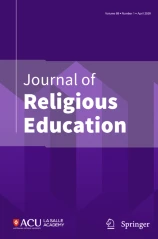The role of ritualized activities in nurturing children’s spiritual growth
2025
Article

In exploring how ritualized activities can help to nurture children’s spiritual growth, this
article encourages a re-thinking of what ritual involves. The link between ritual and routine
is explored. Distinctions are drawn between personal and collective and between ‘everyday’
and ‘special occasion’ rituals, with neither the sole preserve of religion. Examples
of everyday collective rituals include welcomes, goodbyes and meals. Special occasions
include rites of passage and/or public events. Both can strengthen a sense of collective
identity and belonging. The idea of activities being ritualized helps to see these as significant,
but relatively, normal elements of everyday life. The ritualized element results from
how activities are carried out, encouraging individuals and groups to explore significant
moments and so helping them to cope with strong emotions often associated with change
and transitions. While children’s spirituality is hard to define, this is seen as involving a
search for identity, meaning and purpose and a greater sense of connectedness. Spiritual
growth requires time and space, but some structure, within hospitable, inclusive environments.
These can act as ‘containers’ in which children’s search is enabled and nurturing
relationships are created and sustained. Examples of how environments can incorporate ritualized
activities in home, faith community and formal educational settings are given. The
need for routines and rituals to be adapted to make them meaningful to particular children
and groups, taking account of children’s ages and backgrounds, and for adults to model
how to participate, is highlighted.
Author:

Dr Tony Eaude
Executive Committee Member
Publisher:
Springer Academic Publishers
Digital Object Identifier:
https://doi.org/10.1007/s40839-025-00255-6
